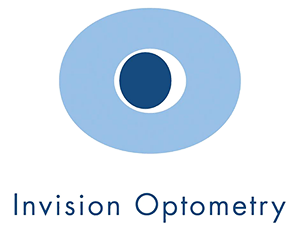About Your Eyes
Myopia Management
Myopia, also known as nearsightedness, is a condition in which the visual images come to a focus in front of the retina of the eye resulting in blurred distant vision.
Myopia is a growing crisis. In the early 1970s, only 25% of Americans were nearsighted. Today, more than 40% of Americans are nearsighted, and that number is increasing at an alarming rate, especially among school-age children. It is estimated that 50% of the world’s population will be myopic by 2050.
Factors that affect nearsightedness:
Genetics – Children with one or two myopic parents are more likely to be myopic.
Environment – Spending more time on activities like reading or using handheld devices instead of spending time outdoors increases the likelihood of becoming myopic.
Why control the amount of nearsightedness?
Controlling myopia progression can reduce the risk of vision threatening disease. Reduction of myopia by 1 diopter has the potential to:
• Reduce risk of myopic maculopathy by 40%
• Reduce risk of open-angle glaucoma by 20%
• Reduce risk of visual impairment by 20%
For future considerations of refractive surgery, outcomes are generally improved when the patient is less nearsighted.
How can myopia be controlled?
For myopic children, outdoor time helps slow down the speed of change in refractive error and axial length; for non-myopic children, outdoor time helps reduce the risk of developing myopia.
Why does outdoor time help prevent myopia?
A number of factors associated with being outdoors such as increased light, spectral composition of outdoor light, a flatter dioptric world, reduced pupil size with improved depth of field, and increased secretion of neurotransmitters such as dopamine might play a role.
FDA approved methods using contact lenses to control myopia:
CooperVision’s Brilliant Futures Program received FDA approval in November 2019 for myopia control. In a three year randomized study of children ages 8-12, children who wore MiSight lenses for a minimum of 10 hours/day for at least 6 days a week were shown to slow progression of myopia by 59% and axial length of the eye by 52%.
The ActivControl™ technology in MiSight® 1 day contact lens uses concentric vision correction zones and treatment zones within the lenses to slow axial elongation to simultaneously corrects the child’s vision, while creating myopic defocus in all gazes.

Johnson & Johnson Vision’s Acuvue Abiliti Overnight Therapeutic Lenses were approved for myopia control on May 12, 2021. Their program utilizes orthokeratology*, a method of using rigid gas permeable lenses for overnight wear with removal upon awakening. The lenses create a temporary change in the shape of the cornea to correct for both myopia and astigmatism so glasses or contact lenses do not need to be worn during the day. This lens option will likely be available at the end of 2021.
*OrthoKeratology has been used for years by eyecare practitioners for the “temporary treatment of myopia”.
Other non-approved treatments:
Atropine eye drops
A more common treatment in Asia, low dose Atropine is instilled in the child’s eyes nightly before bedtime. Atropine is a nonselective muscarinic antagonist, i.e., it competes for binding sites on all muscarinic receptors, thus blocking the action of acetylcholine. It’s mechanism of action is not clearly understood. Side effects could be mildly dilated pupils and loss of accommodation (or focusing). This medication is not FDA-approved and is not commercially available so it requires ordering through a compound pharmacy.
Future treatments using spectacle lenses to control myopia:
1. MiYOSMART by Hoya
MiYOSMART’is based on patent protected Defocus Incorporated Multiple Segments (D.I.M.S.) which create a myopic defocus effect. The product has two years of clinical data. It is available in Canada but not available in the US at this time.
2. Stellest by EssilorLuxotica
The Stellest lens incorporates H.A.L.T. (Highly Aspherical Lenslet Target) technology to control myopia progression. The H.A.L.T. technology comprises a group of aspherical lenslets on 11 rings surrounding a clear central distance correction zone that produces a myopic defocus signal in front of the retina.
3. SightGlass Vision DOT
In February 2021, CooperCompanies and EssilorLuxottica announced a partnership with SightGlass Vision spectacle lenses. This novel spectacle lens design incorporates “Light diffusion technology” and has a clear central aperture surrounded by multiple dots that reduce the peripheral retinal contrast by at least one-third to half (30 percent to 60 percent) compared to central or on-axis contrast.This technology is based on the hypothesis that high contrast signals at retinal photoreceptors induce the eye to grow and low contrast, similar to peripheral defocus, induces the eye to slow axial length growth. They are likely to obtain FDA approval in 2022.
With the urgent need to address our myopia epidemic, we are fortunate to have a growing number of options available to us.
Let us know if you have any questions. We are happy to discuss the best options for your young myope.
